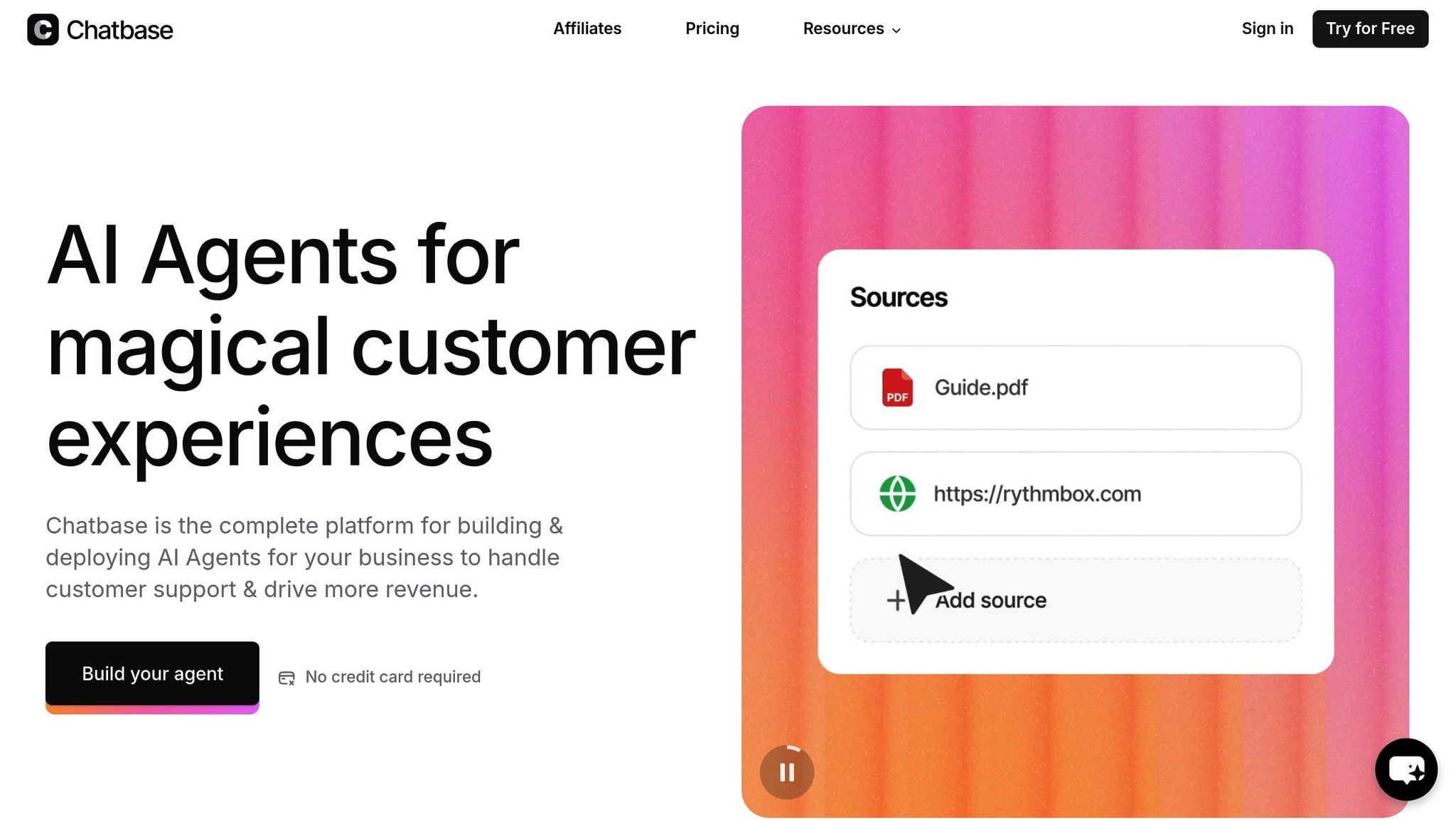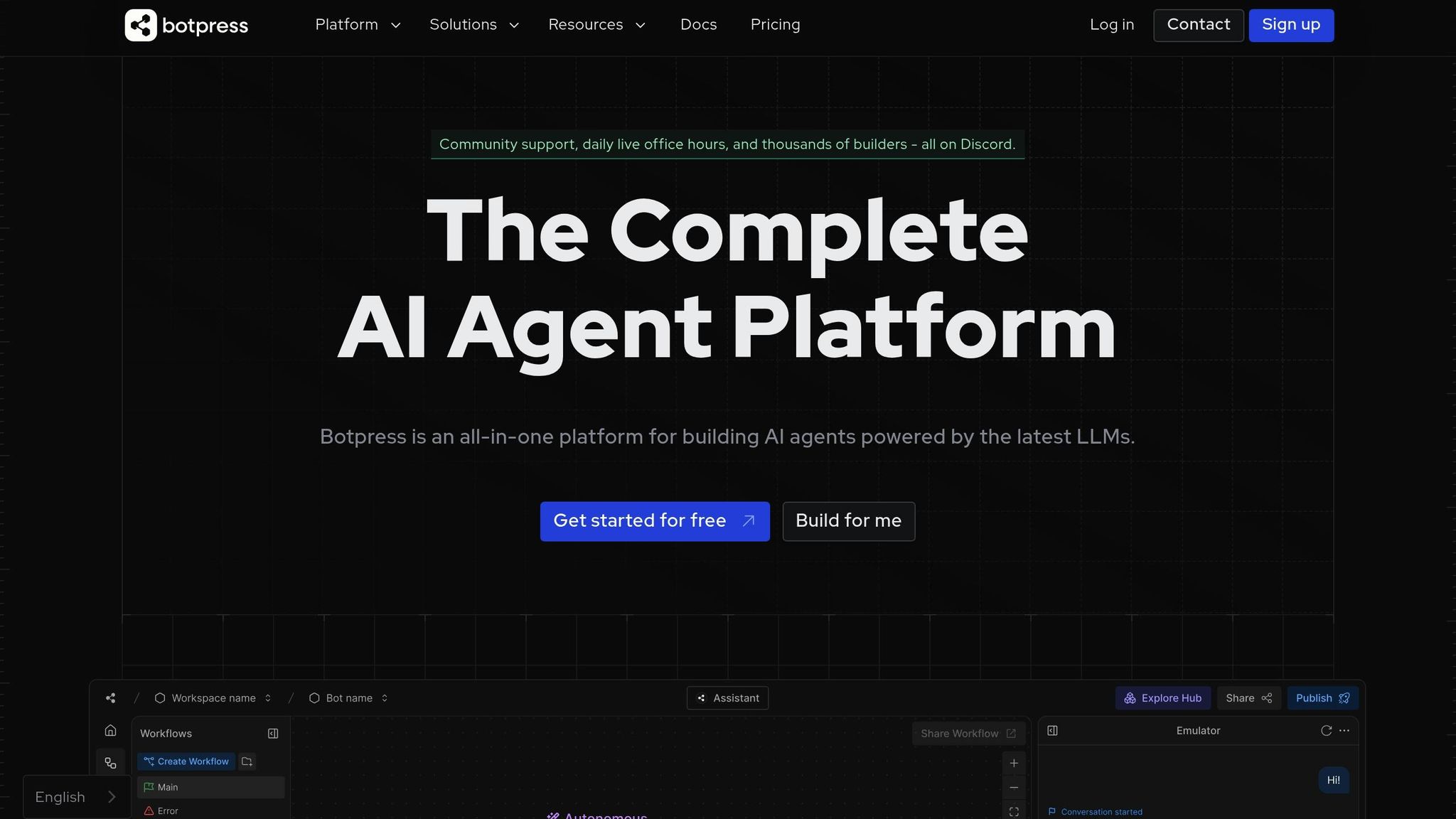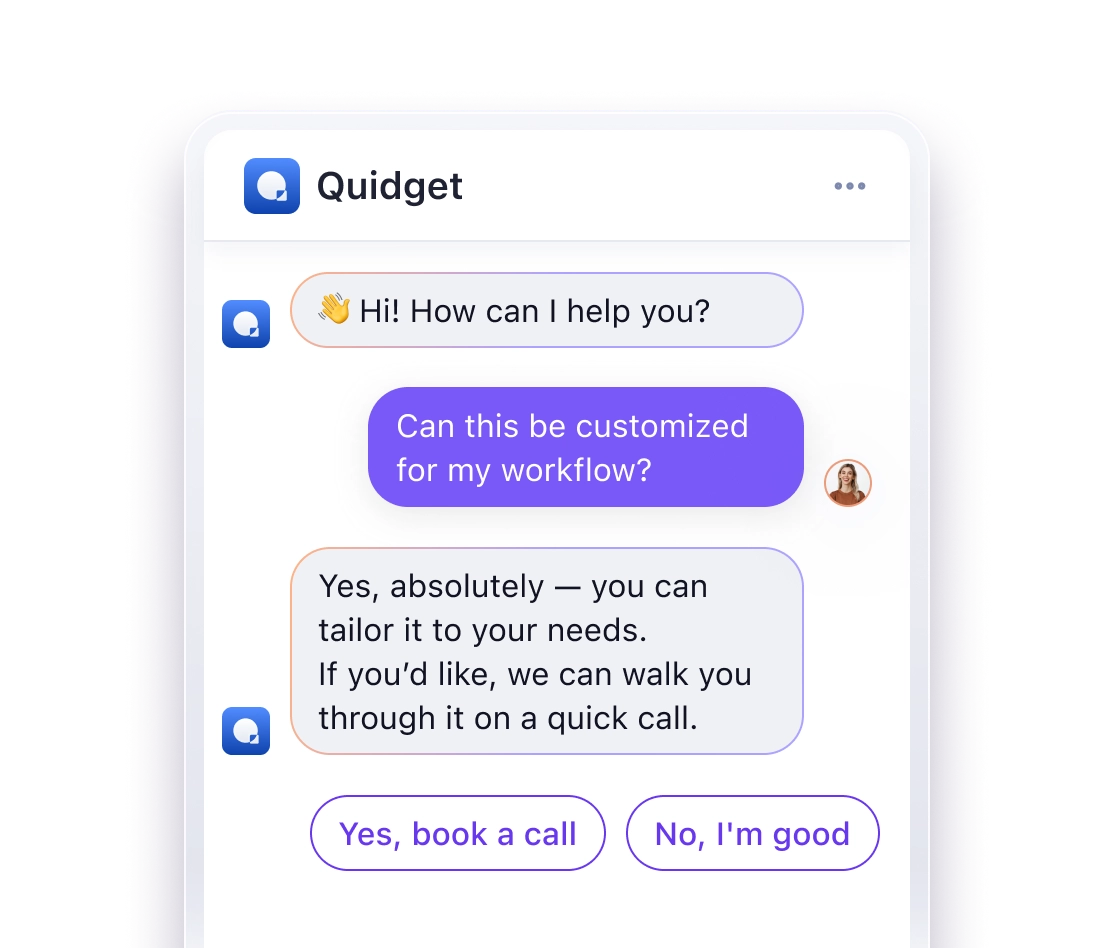Chatbase and Botpress are two popular AI chatbot platforms, but they cater to different needs. Chatbase specializes in detailed analytics and performance tracking, making it ideal for teams focused on improving chatbot interactions. Botpress, on the other hand, is developer-friendly, offering advanced customization, a visual flow editor, and powerful NLU capabilities for creating conversational AI.
Quick Comparison
| Feature | Chatbase | Botpress |
|---|---|---|
| Focus | Analytics and performance tracking | Conversational AI and customization |
| Interface | Analytics dashboard | Drag-and-drop visual flow editor |
| NLU Capabilities | Basic intent recognition | Advanced NLU engine |
| Customization | Limited branding options | Extensive webchat and code customization |
| Pricing | Fixed pricing model (starts at $19/month) | Pay-as-you-go model (free tier included) |
| Technical Skills | Basic API knowledge | NodeJS skills for advanced features |
| Channel Support | Facebook Messenger, WhatsApp | Facebook Messenger, WhatsApp, Telegram |
| Support | Business hours | Tiered options, including 24/7 premium |
Key takeaway: Choose Chatbase if you need strong analytics and easy setup. Opt for Botpress if you want deep customization and have the technical skills to leverage its features.
Main Features
What Chatbase Offers

Chatbase emphasizes analytics to help monitor and improve chatbot performance. It offers detailed conversation tracking, user engagement metrics, and supports messaging on platforms like Facebook Messenger and WhatsApp. Its analytics dashboard provides insights into message traffic and allows custom alerts for unusual activity. Additionally, Chatbase integrates with Google Analytics, enabling businesses to combine chatbot data with website metrics for a unified view.
What Botpress Offers

Botpress caters to developers but remains accessible to non-technical users. Its visual flow editor uses a drag-and-drop interface for creating intricate conversation designs. The platform’s NLU engine manages tasks like intent classification, entity extraction, and language identification. Botpress also includes action cards for running NodeJS code and event listeners that trigger specific actions based on user behavior.
Next, let’s look at how these features address various business needs.
Feature Comparison
Here’s a breakdown of the main differences between Chatbase and Botpress:
| Feature Category | Chatbase | Botpress |
|---|---|---|
| Interface Design | Analytics-focused dashboard | Visual flow editor with drag-and-drop |
| NLU Capabilities | Basic intent recognition | Comprehensive NLU engine |
| Team Collaboration | Basic user management | Real-time collaboration and workspace tools |
| Integration Options | Custom API integrations | Action cards and event listeners |
| Customization | Limited branding options | Extensive webchat customization |
| Security Features | RBAC and SSO support | RBAC, SSO, and scalable infrastructure |
| Channel Support | Multi-platform messaging support | Broad channel connectivity |
| Performance Tracking | Advanced analytics tools | Basic monitoring capabilities |
Botpress is a great fit for teams needing deep customization and flexible integrations. On the other hand, Chatbase stands out for companies focused on detailed analytics and performance tracking, offering robust tools to monitor and optimize chatbot interactions. The choice between the two often depends on whether your priority is advanced development features (Botpress) or strong analytics capabilities (Chatbase).
Setup and Design Options
Platform Design
Botpress and Chatbase offer distinct approaches to their user interfaces. Botpress stands out with its visual flow editor, which uses drag-and-drop functionality. This Studio Interface allows users to map out conversation flows visually, keeping things simple and accessible without requiring deep technical expertise.
Chatbase, on the other hand, leans heavily on an analytics-driven dashboard. While this design is powerful for tracking performance, it requires more time to get comfortable with, particularly for those new to analytics tools.
| Design Element | Botpress | Chatbase |
|---|---|---|
| Primary Interface | Visual flow builder | Analytics dashboard |
| Learning Curve | Gentle and progressive | Steeper initial curve |
| Customization Options | Broad webchat styling | Limited branding choices |
| Real-time Collaboration | Built-in workspace tools | Basic user management |
Help Resources
When it comes to support materials, Botpress provides a richer set of resources. Its documentation includes detailed tutorials, API references, and practical examples. Additionally, the platform fosters an active community where users can exchange tips and solutions.
Chatbase’s documentation is more basic, offering limited technical depth. Users tackling complex implementations may need to look for external resources. Its community engagement is also less active compared to Botpress, which could slow down troubleshooting for some users.
For those without a technical background, Botpress’s user-friendly design and extensive support resources make it a more approachable choice. However, if your main priority is analyzing chatbot performance, Chatbase’s analytics-focused setup might be worth the extra effort to master. These support structures align with the platforms’ technical strengths discussed earlier.
Cost Analysis
Chatbase Plans
Chatbase provides a free starter plan and several paid options tailored for analytics. The Plus plan, priced at $79/month, includes analytics integration and supports multiple messaging channels. For teams, the Team plan costs $446/month, offering multi-user collaboration and additional integrations. Enterprise customers can opt for customized solutions with pricing based on specific needs.
Botpress Plans
Botpress offers a free tier with a pay-as-you-go model. The Plus plan is available for $89/month, featuring custom action cards and additional messaging channels. Teams requiring advanced collaboration tools can choose the Team plan at $495/month. For larger organizations, the Enterprise plan provides tailored pricing and features.
Price Comparison
| Feature Category | Chatbase | Botpress |
|---|---|---|
| Entry-Level Plan | Free plan with basic analytics | Free tier with core features |
| Mid-Tier Cost | $79/month (Plus) | $89/month (Plus) |
| Team Plan | $446/month | $495/month |
| Infrastructure Costs | Possible extra fees for high usage | Free infrastructure for integrations |
| Scaling Model | Fixed monthly pricing | Pay-as-you-go model |
| Custom Solutions | Enterprise custom pricing | Enterprise custom pricing |
Chatbase and Botpress cater to different needs. Botpress’s pay-as-you-go model is ideal for businesses with variable usage and a focus on multi-channel growth, offering free integration infrastructure. On the other hand, Chatbase’s fixed pricing works well for organizations that prioritize detailed analytics. Your choice should depend on your usage patterns, channel preferences, and analytics priorities.
sbb-itb-58cc2bf
Connection Options
Chatbase Connections
Chatbase specializes in analytics-driven integrations, making it a strong choice for performance tracking. It offers native integration with Google Analytics, allowing teams to analyze user behavior effectively. The platform also supports popular messaging channels and provides custom API endpoints for connecting with third-party tools.
Botpress Connections
Botpress, on the other hand, takes a developer-focused approach with an extensive integration hub. It supports a wide range of messaging platforms and includes custom action cards that allow developers to run NodeJS code. This feature enables tasks like automating emails or creating support tickets directly within the platform.
Integration Overview
Here’s a quick comparison of how Chatbase and Botpress handle integrations:
| Integration Type | Chatbase | Botpress |
|---|---|---|
| Analytics Tools | Google Analytics | Built-in analytics dashboard |
| Messaging Platforms | Facebook Messenger, WhatsApp | Facebook Messenger, WhatsApp, Teams, Telegram |
| Development Tools | Custom API Endpoints | NodeJS Action Cards, Event Listeners |
| Infrastructure Cost | Usage-based fees | Free integration infrastructure |
| Technical Requirements | Basic API knowledge | NodeJS development skills |
Botpress is ideal for businesses needing support for multiple messaging platforms and advanced customization options. Its free integration infrastructure can help organizations scale more easily. On the flip side, Chatbase is a better fit for teams focused on analytics and performance tracking, offering simpler API endpoints that require only basic technical skills. These differences highlight Chatbase’s focus on analytics and Botpress’s emphasis on developer flexibility.
Ranking Top AI Chatbots for your Business Website
Platform Choice Guide
Deciding between Chatbase and Botpress comes down to your business needs and technical expertise. Chatbase focuses on delivering strong analytics and performance tracking, making it a great fit for teams that rely on data to guide decisions.
| Business Type | Why Choose Chatbase | Why Choose Botpress |
|---|---|---|
| Marketing Teams | Advanced analytics and performance insights | Broad messaging platform support |
| Small Businesses | Affordable starting price ($39/month) | Free tier (up to 1,000 messages) |
| Enterprise | Strong RBAC and SSO features | Customization options for developers |
| Technical Teams | Requires only basic API knowledge | Built for NodeJS developers |
Here are some key points to think about when choosing:
- Budget: Chatbase offers a clear pricing structure starting at $39/month, while Botpress uses a message-based model that includes a free tier.
- Technical Skills: Botpress demands more technical know-how for customization, whereas Chatbase is easier to pick up with minimal API knowledge.
- Integration Needs: Botpress supports a wider range of messaging platforms and allows for NodeJS-based customizations. Chatbase, on the other hand, keeps things simple with easy API integrations.
If performance tracking is your top priority, Chatbase provides a straightforward solution. But for teams that need more customization and have the technical resources to make it happen, Botpress stands out with its flexible setup and integration options.
FAQ
This FAQ tackles common questions and highlights the key differences between Chatbase and Botpress, supplementing the feature and cost breakdown provided earlier.
Technical Skills Needed
Both platforms are designed with user-friendly interfaces, but their requirements differ when it comes to technical expertise. Botpress can be used by non-technical users thanks to its drag-and-drop visual flow editor. However, unlocking its full capabilities often requires NodeJS knowledge. On the other hand, Chatbase is simpler, needing only basic API familiarity to get started.
Data and Reports
When it comes to analytics, the two platforms have distinct focuses. Chatbase provides in-depth performance tracking, offering insights into conversation flows and user engagement. It also integrates directly with Google Analytics for seamless reporting. Botpress, however, leans more towards improving bot features through integrations and provides only basic usage metrics.
| Feature | Chatbase | Botpress |
|---|---|---|
| Performance Tracking | Detailed insights into conversation flows | Basic usage metrics |
| Analytics Integration | Built-in Google Analytics support | Limited analytics tools |
| User Engagement | Comprehensive interaction metrics | Basic engagement metrics |
Next, let’s look at the free options both platforms provide.
Free Options
Botpress offers a free pay-as-you-go plan that adjusts based on message volume. For additional features, you can choose from paid plans like the Plus plan at $89/month or the Team plan at $495/month. Chatbase provides a 30-day free trial, after which plans start at $19/month for basic features. For organizations with advanced needs, both platforms offer enterprise-level options with enhanced security and customization.



